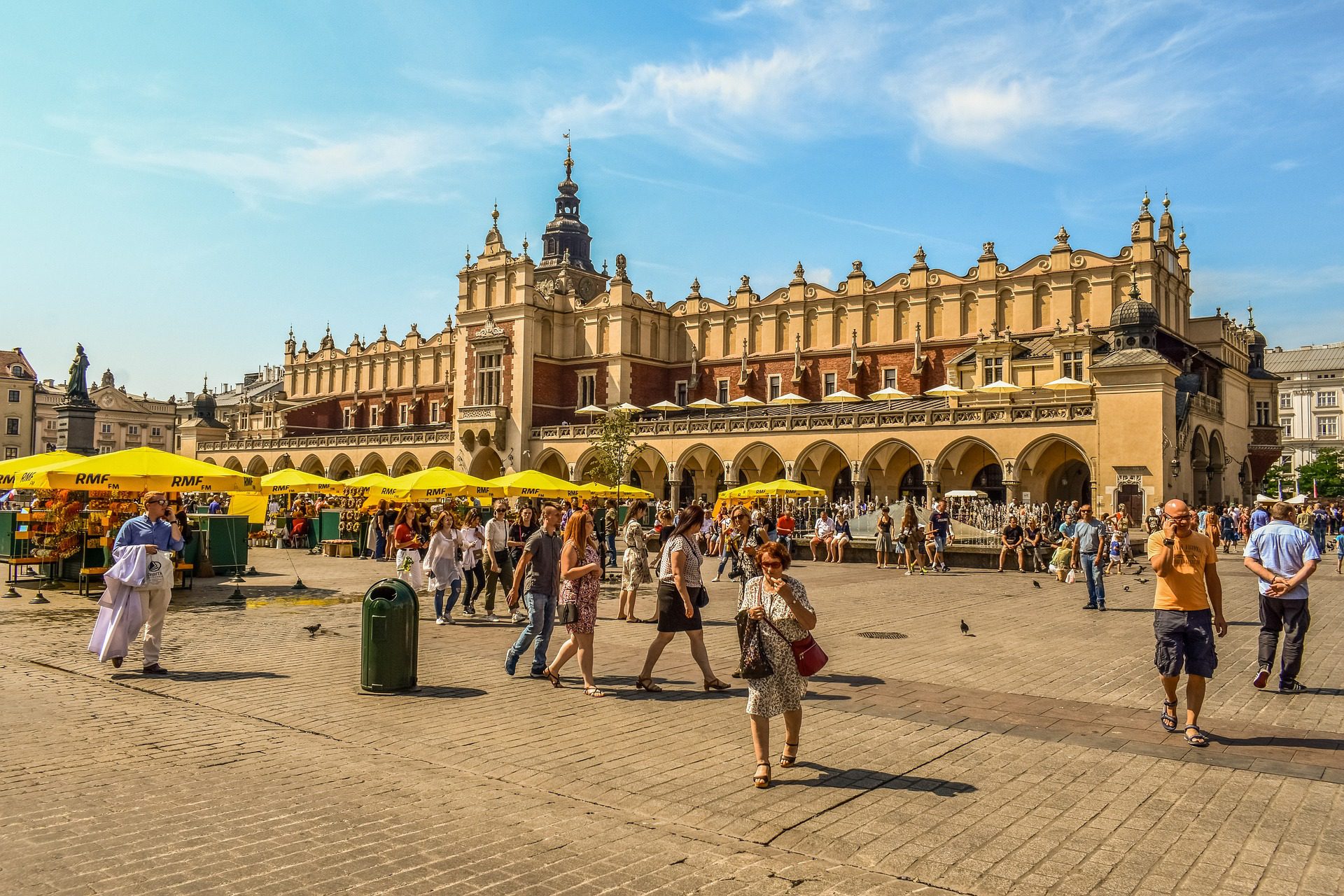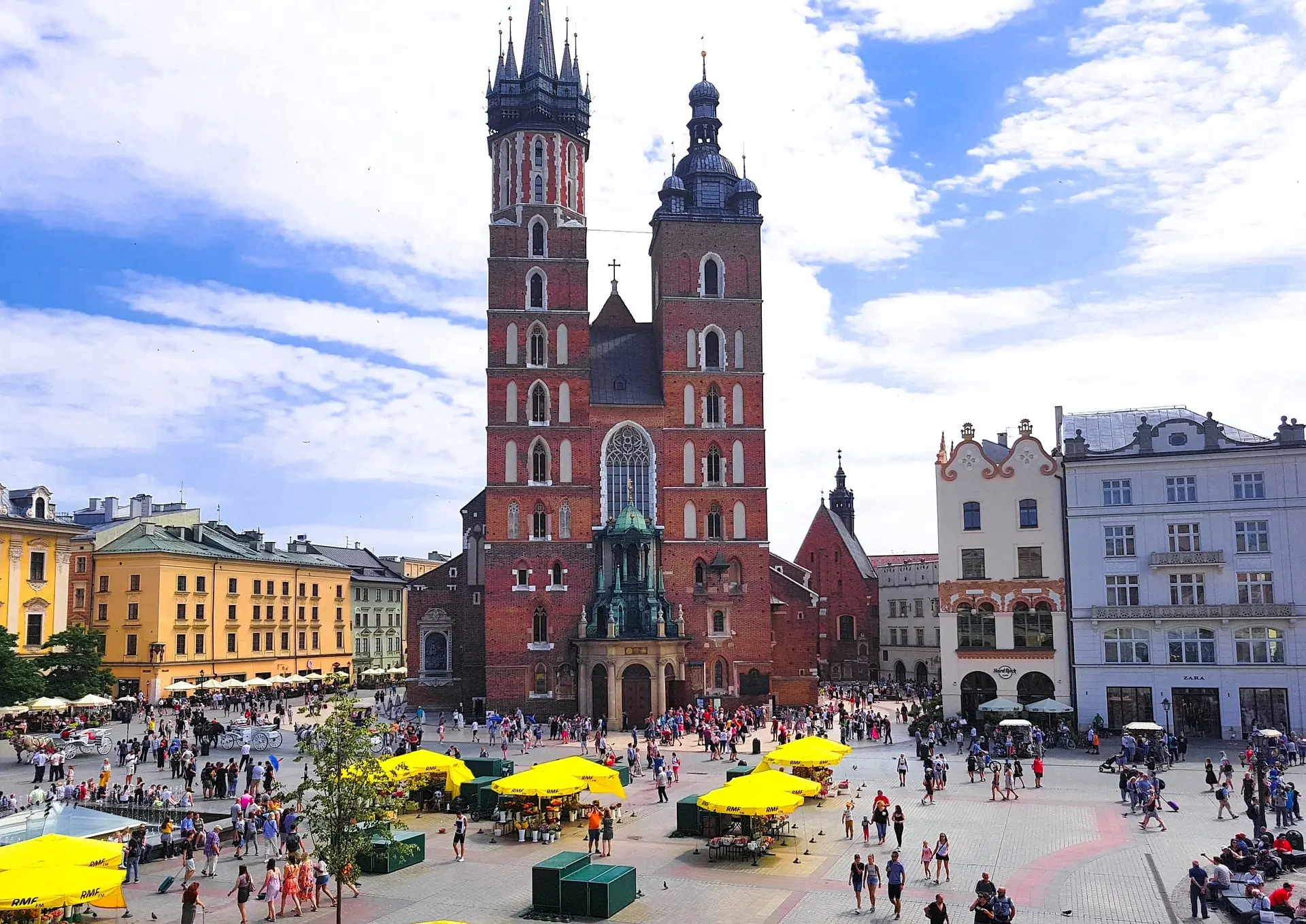Polish culture
Polish culture – Rich, diverse & steeped in history
Polish culture is rich, diverse and steeped in history. It is a fusion of various traditions, customs, and religions, with influences from neighbouring countries, including Germany, Russia, Ukraine, and the Czech Republic. Poland is located in Central Europe and is the sixth most populous member of the European Union.
Polish culture is closely connected with its intricate 1000-year history & Kraków is considered by many to be the cultural capital of Poland. On this page, we provide a very brief introduction to Polish culture so that you can better understand the locals.
Language and Literature
The official language of Poland is Polish, which is a West Slavic language. The Polish language has a rich literary tradition, and Polish literature has produced many world-renowned writers such as Wisława Szymborska, Henryk Sienkiewicz, Czesław Miłosz, and Adam Mickiewicz. Poetry, in particular, is an essential part of the Polish literary tradition. The works of Mickiewicz and Krzysztof Kamil Baczyński have inspired generations of poets, and their legacy continues to influence contemporary poets. Kraków has some of the best museums in the country and several famous theatres. It became the residence of two Polish Nobel laureates in literature: Wisława Szymborska and Czesław Miłosz, while a third Nobel laureate, the Yugoslav writer Ivo Andric also lived and studied there. It is also a home to one of the world’s oldest universities, the Jagiellonian University of Kraków.

Music and Dance
Poland has a rich musical heritage, and traditional music is an integral part of Polish culture. Folk music is diverse and includes a wide range of instruments, such as the accordion, fiddle, and dulcimer. Polish folk dance is also an important aspect of Polish culture, with the most popular being the polonaise, mazurka, and krakowiak. These dances are often performed in colourful regional costumes and are an important part of traditional festivals and celebrations.
The music of Poland has a long history and is inextricably linked with Polish culture. Fryderyk Chopin, inspired by Polish tradition and folklore, conveys the quintessence of Romanticism. Since 1927, the International Frederick Chopin Piano Competition has been held every five years in Warsaw.
Polish classical music is also represented by composers like Karol Szymanowski, Mieczyslaw Karlowicz, Witold Lutoslawski, Wojciech Kilar, Henryk Mikolaj Gorecki, and Krzysztof Penderecki – all of whom rank among the world’s most celebrated composers.
Contemporary Polish jazz with its special national flavour has fans and followers in many countries.
Artists from Poland, including famous composers like Chopin or Penderecki and traditional, regionalised folk musicians, create a lively and diverse music scene, which even recognises its own music genres, such as poezja śpiewana (sung poetry) and disco polo.
Poland is one of the few countries in Europe where rock and hip hop dominate over pop music, while all kinds of alternative music genres are encouraged.
Poland has always been a very open country to new music genres and even before the fall of communism, music styles like rock, metal, jazz, electronic, and New Wave were well-known. Since 1989, the Polish scene has exploded with new talents and a more diverse style.
Poland has a very active underground extreme metal music scene. Some of the bands that have heralded and helped the cause are Behemoth, Vader, Yattering, Decapitated, Indukti, Hate, and Lux Occulta. This has paved ground for a large underground movement.
Art and Architecture
Polish art and architecture are known for their rich history and distinct style. Poland has many beautiful cities, and the architecture is a mix of Gothic, Renaissance, Baroque, and Art Nouveau styles. The city of Krakow is home to many well-preserved examples of Gothic architecture, including the famous Wawel Castle. Warsaw, the capital city, was almost entirely destroyed during World War II but has been rebuilt with much care and attention, including the reconstruction of the Old Town. Polish art is also highly regarded, with famous artists such as Stanisław Wyspiański and Józef Chełmoński contributing to the country’s artistic legacy.
Cuisine
Polish cuisine is hearty, flavorful, and often includes meat and potatoes. Traditional dishes include pierogi, which are dumplings filled with cheese, potatoes, or meat, and bigos, a stew made with sauerkraut, meat, and spices. Poland is also known for its bread, with many varieties available, including the traditional obwarzanek and the sweet brioche-like babka. In recent years, Polish cuisine has gained more international recognition, and restaurants serving modern takes on traditional dishes can be found in major cities around the world.
Religion and Festivals
Poland is predominantly Catholic, and the Catholic Church has played a significant role in shaping the country’s history and culture. The most important religious holiday is Easter, with many traditions and customs associated with the holiday, including the blessing of Easter baskets and the making of Easter eggs. Other important festivals include All Saints’ Day, which is a day of remembrance for the dead, and St. John’s Eve, which celebrates the summer solstice with bonfires and traditional rituals.
Older Polish people are strongly religious while younger thirty-somethings tend to be medium religious (attending church on major catholic holidays) or not at all religious. The so-called ‘Generation JP2’ (JP2 is short for John Paul II), people between the age of 16 and roughly 25, tend to establish a neo-conservative look on religion in Poland, just like Americans did in the ’80.
The vast majority of youngsters remain officially catholic and occasionally go to church, but in fact do not give much attention to religion. During Easter, the churches have a lot of ceremonies and are very well visited by the locals. Saturday evening is for candlelight ceremonies outside the churches.
The Black Madonna of Częstochowa is a holy icon of the Virgin Mary, that is both Poland’s holiest relic and one of the country’s national symbols.
Because of the Black Madonna, Częstochowa is regarded as the most popular shrine in Poland, with many Polish Catholics making a pilgrimage there every year. Often, people will line up on the side of the road to hand provisions to the pilgrims as those who walk the distance to Częstochowa walk the entire day and have little means to get things for themselves.
Regular stores are closed during main religious holidays (25th & 26th of December, Easter Sunday, and Monday), other holidays may mean shorter working hours.
Etiquette
Some men, particularly older men, may kiss a woman’s hand when greeting or saying goodbye. Kissing a woman’s hand is considered to be chivalrous, but you will not go wrong shaking hands. For a more heartfelt greeting or goodbye, close friends of either sex will kiss three times, alternating cheeks.
A fairly common practice is for people to greet each other with a dzień dobry (good day) when entering elevators, or at the very least, saying do widzenia (goodbye) when exiting the elevator. It is usual to bring a gift when invited to someone’s home. Flowers are always a good choice. Florists’ kiosks are ubiquitous; be sure to get an odd number of flowers, as an even number is associated with funerals.
It is customary to hold doors and chairs for women. Poles are generally old-fashioned about gender etiquette. Men should not wear hats indoors, in particular when entering a church. Most restaurants, museums, and other public buildings have a cloakroom, and people are expected to leave bags and outerwear there.
It is advisable to refer to Poland (as well as to some other countries like Czech Republic, Slovakia, or Hungary) as Central Europe, and not Eastern Europe. Although not very offensive, if used, it may reflect foreigners’ ignorance and certain disrespect on the history and clearly Latin cultural heritage of the countries from the region. Poles themselves refer to the “old” EU west of its borders as “Zachód” (West) and to the states created after the break-up of the USSR as “Wschód” (East). Geographically this is borne out by drawing a line from the tip of Norway to Greece and from the Urals to the coast of Portugal. For better or worse, Poland remains at the cross-roads of Europe, right in the continent’s center.
In conclusion, Polish culture is a rich tapestry of traditions, customs, and influences from neighboring countries. From literature to music, art, and cuisine, Poland has much to offer, and its cultural heritage is celebrated and cherished by people all around the world.

